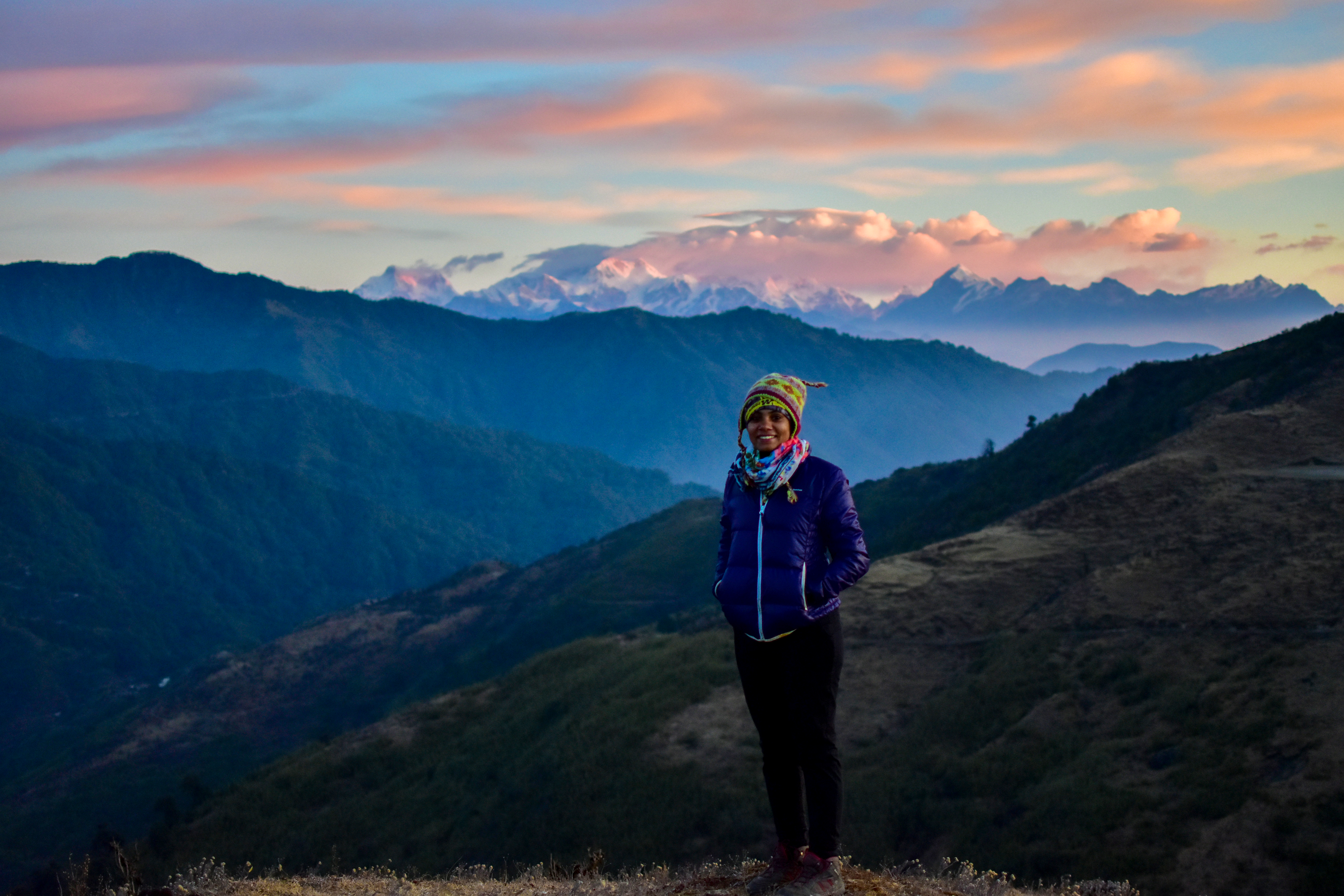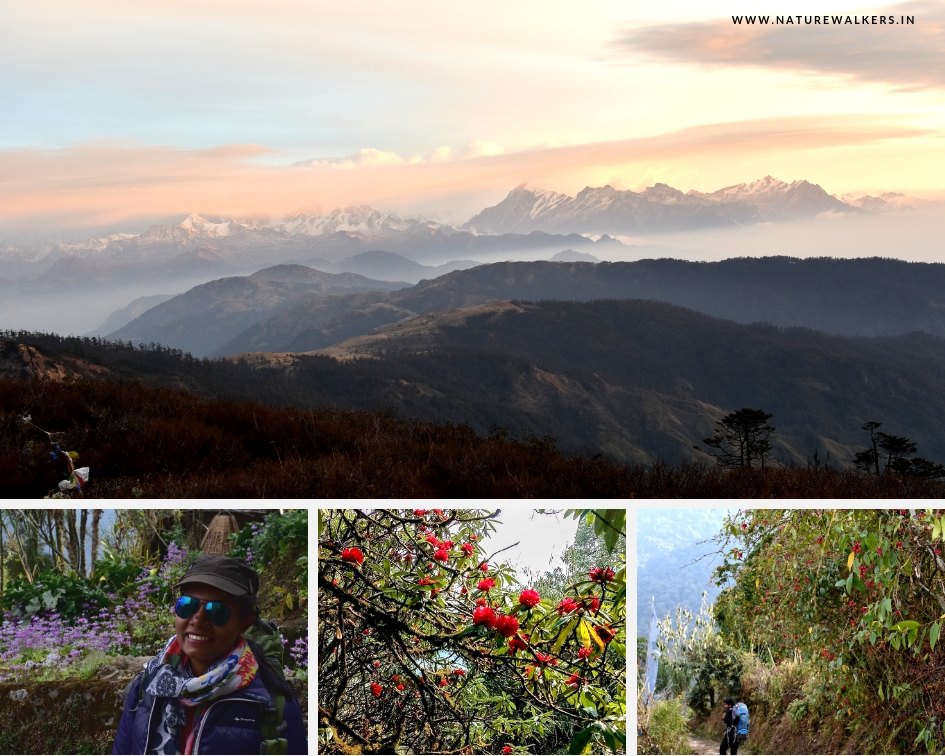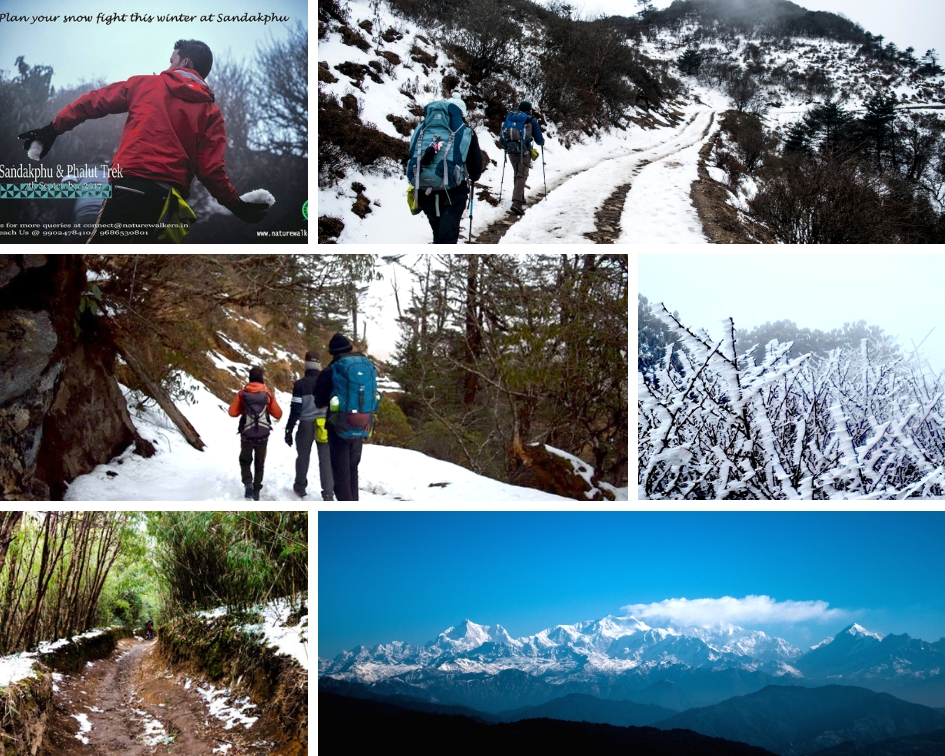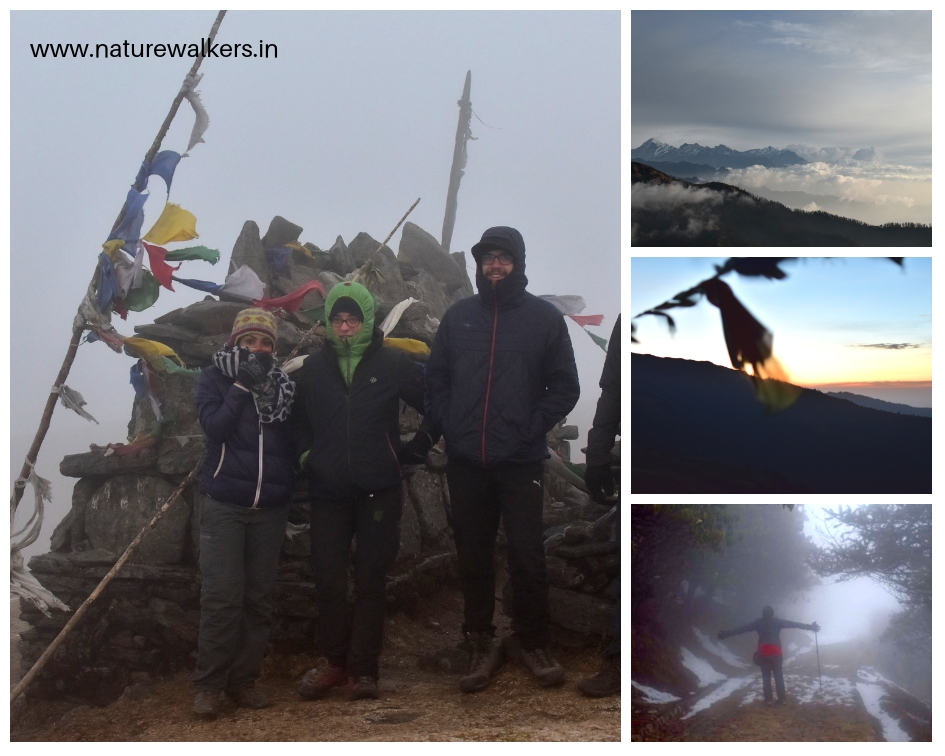
Shades of Sandakphu Trek- Highest peak of West-Bengal
Sandakphu Trek takes you to the highest point in West Bengal at 3636 m (11,930 ft). It is an ideal trek for beginners and offers some of the most spectacular panoramic views of Kanchenjunga and other mountains of Nepal, including Mt. Everest (if the sky is clear). What is unique about this trek is that the trail alternatively crosses over the border of India and Nepal all the way till Sandakphu.
Sandakphu trek can be done throughout the year, making it more appealing and favorable for trekkers. Every season enhances the grace of this trek in its own way.
Seasons at Sandakphu
Due to the location of the Sandakphu, which is on the borders of Nepal and Sikkim, the area experiences prolonged monsoon. Heavy rain clouds start hovering in the sky from April until October. The trek presents itself quite differently in each season and undeniably remains beautiful throughout the year.
Let’s explore what is the best part of this trek in each season.
Spring and Summer:
The second week of March marks the beginning of the summer. Fresh blossoms start appearing in the lower region and gradually proceed towards the higher altitude.
Rhododendron and Giant Magnolia are the two famous flowering plants in the region along with several other floral species. The cloudy and misty atmosphere promotes the growth of these flowers. The morning is usually bright and clear, offering an eye-catching view of the majestic mountains around.
Trekkers love to visit Sandakphu in this season to enjoy peaceful weather. The beautiful red and pink Rhododendron flowers are in full bloom and create awe-striking vistas all along the trail.
Autumn and Winter:
From mid-October to January is the winter season in the hills of Sandakphu. From early October clouds start moving outside the region and the weather becomes clearer. November is ideal for trekking in Sandakphu as this is when trekkers get clearest views of the mountain ranges surrounding the region.
In Autumn, the dry, falling leaves seem to dramatically change the color of the landscapes around Gairibas. Trekkers might also get a chance to witness the first snowfall of the season around this time and with a backdrop of Mt. Everest and Kanchenjunga peaks, it is a magical sight to behold.
Post-Monsoon/July End to End of August:
During the monsoons, from the end of June to July, trekking to Sandakphu gets risky due to heavy rains. Also, trekking in this weather isn’t rewarding as the possibility of viewing Kanchenjunga and Everest is remote.
On the other hand, in the post-monsoon season, trekkers get a chance to witness a wide variety of flora in the region, which is when the greenery of Sandakphu is at its best. Not too many people trek around this time, which makes it a favorable time for trekkers seeking some solitude.
Sandakphu trek is done almost throughout the year with each season adding a different spin to the trekking experience. People generally tend to ask, which is the best season to visit Sandakphu. It completely depends on your personal preference.
If you love the summer sun with blossoms of flower throughout the trail then you must visit it in spring. If you want to get a clear and mighty view of Himalayas then the trek must be done in November when the sky is clearer and devoid of clouds.
For trekkers who wish to avoid the seasonal crowd, the trek can be done in or around the monsoon period. And for those few who want to witness the snow, the latter part of winter, which in January is the best time to expect the snowfall.
Happy Trekking!
Latest Blogs | Stories | Articles
Adventure
beach trek
blog
bouldering
camping
camping near chennai
conserve
coorg
events in bangalore
forest
gokarna
hampi
happiness
heritage
hiking
himalayan trek
interview
karnataka
karnataka treks
kerala
kodachadri
kudremukh
lakes
leech
monsoon trek
Nature
naturewalkers
nature walkers
no trace policy
Sandakphu Trek
Singalila
south india
sunset
tadiandamol
tamilnadu
temple
travel
travel diaries
trek
trekking
trekking in india
trekking places
wanderlust
western ghats
womens day
Subscribe:




It’s really amazing, Thanks for sharing the detailed info.